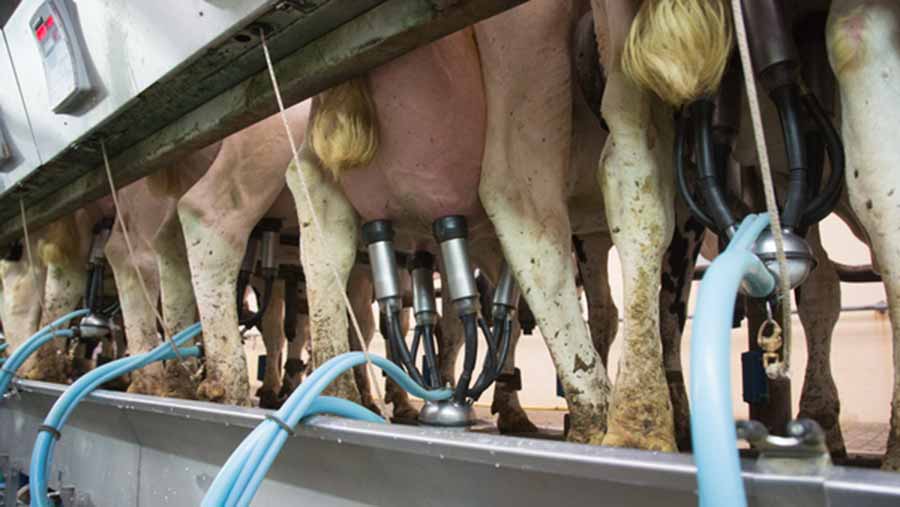Opinion: Production costs are crucial to dairy future
 © Tim Scrivener
© Tim Scrivener When I started dairying in autumn 2013, the standard litre milk price was 31p.
At every conference I went to, graphs were shown with shooting upward trajectories: massive world population growth, emerging middle classes and increasingly westernised diets all pointed towards a bright future for the British dairy industry.
As 2015 draws to a close, the price is 25% lower and things are unlikely to improve until the second half of next year.
With each successive price cut in the spring, those graphs seemed more distant. The reality of the volatile world market had truly hit home. Running parallel to this global story was the domestic fiasco of supermarket price wars and farmer protests, culminating in the headline-hitting image of two cows being paraded around Asda.
 Liz Haines and her husband Nick milk 320 spring-calving cows in a contract farming arrangement in north Shropshire
Liz Haines and her husband Nick milk 320 spring-calving cows in a contract farming arrangement in north ShropshireThe use of milk as a loss-leader degraded our product despite evidence that shoppers do value it. A Facebook page called “I’m Happy to Pay More for Milk” currently has over 38,000 “likes” and many are now proving it by buying Morrisons’ Milk for Farmers.
But controversy has arisen with consumers angry that the extra money will be distributed to all co-op members, not just those in the UK.
As an Arla member, I think this is right and fair. If we want the benefits of being in a European co-op, we have to share the rewards. It’s thanks to Arla’s range of brands sold throughout Europe that I’m receiving 23p/litre not 16p/litre like some producers in the UK. The Union Jack on the Milk for Farmers bottle is perhaps misleading, but what this really highlights is a lack of knowledge among consumers about how milk is really sourced.
To survive in these times of volatility, we have to be able to compete successfully in both the domestic and international markets, and co-ops like Arla are key to making this possible.
Likewise, it isn’t fair to lay the blame solely at the supermarkets’ door. When it came to it, many responded to the protests, with Aldi, Asda and Lidl all pledging to pay a minimum of 28p/litre.
After completing its review of the Sustainable Dairy Group, Tesco has decided to continue using the cost of production tracker to set the milk price, and removed the clause which would have allowed it to make an adjustment if the global market got severely out of kilter. Although suppliers will face tougher standards, overall, it seems they may have escaped lightly.
Compare this with New Zealand where 95% of milk is exported, with no buffer whatsoever from the harsh reality of the world market. Farmers are forecasted to receive 90c/kg of milk solids below break-even this year (put another way, that’s almost 3p/litre below cost of production).
Most in the UK have yet to see such extreme lows, and we are lucky that our liquid market and added-value branded products cushion us from the worst of the global situation.
It may seem hard to believe, but I feel optimistic about 2016 and the future of British dairying.
Instead of crystal ball gazing about price, or slamming supermarkets and processors, my energies are better focused on the things I can affect – the most important being cost of production. In the UK, there is a gap of 14p/litre between the top and bottom 25% of businesses, according to the AHDB.
These brutal price cuts have forced me to scrutinise my budgets for next year harder than ever before. If farmers can maintain the cost cuts they have been forced to make this year, we will all reap the benefits when the milk price rises.

